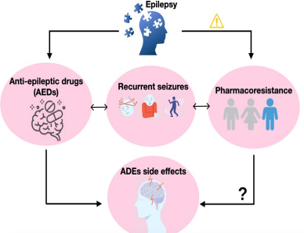Abstract
Epileptic seizures in the form of involuntary body movements have made patients’ lives extremely difficult. There are mainly two types of seizures partial or focal seizure affect just one side of the brain and generalised seizures affect the whole brain of a person. The person suffers from neuro-sensory deregulation and consciousness loss, coupled with episodes of seizures. Different drug therapies have been used for epilepsy patients targeting neurotransmitters regulation mechanisms. The drug targets and mechanism of action in polytherapy remain ambiguous. However, 6 out of 10 patients quit antiepileptic drug (AED) therapy due to side effects like depression, aggression and psychosis. Several behavioral side effects make them socially awkward, due to which patients cease to continue drug therapies. The combined effect of AED side effects and resorting therapies lead to recurrent seizures which further disturb the neurotransmission on account of every seizure episode. The present review describes epilepsy in terms of clinical treatments and associated side effects. The study provides a novel conceptual loop of correlation between AED polytherapy, side effects and Pharmacoresistance. This review creates caution for clinicians to think intricately before prescribing drugs for epilepsy and ensure communication of side effects. The review opens research prospectives for drug targets to break the conceptual loop for the Pharmacoresistance. Further, this paper enhances the understanding of epilepsy and improves diseases condition.
Full text article
Authors

This work is licensed under a Creative Commons Attribution-NonCommercial-NoDerivatives 4.0 International License.

